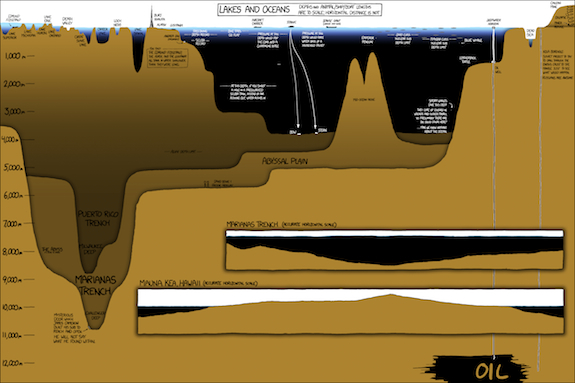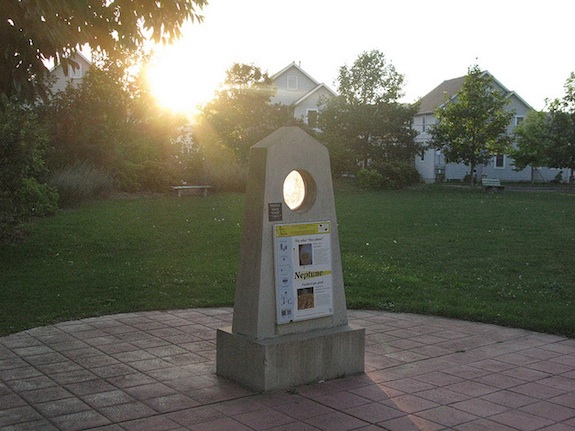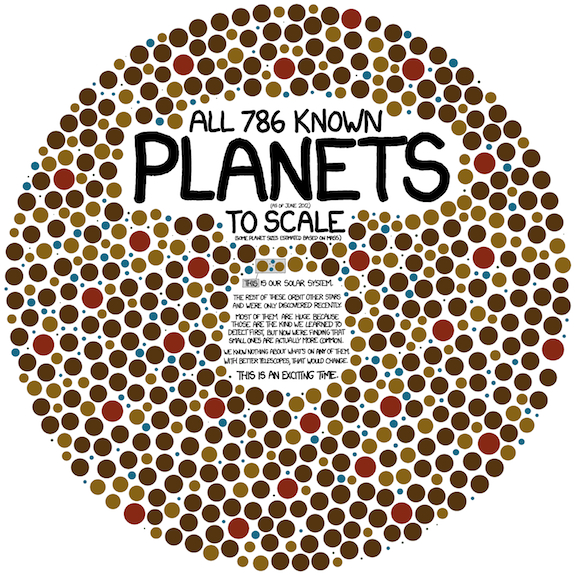The Best Graphics That Make You Realize You Don’t Know How Big Anything Actually Is
Here are the best scale visualizations out there, starting with the classic Powers of Ten video that melted the faces of everyone alive in 1977

Image: XKCD
Last week, mathematician Steve Strogatz took on scale at The New York Times. He first explains how we’re basically incapable of understanding how big the universe is:
Admit it. You have no real feeling for the size of the solar system. That’s O.K. Nobody else does either. Even knowing the numbers doesn’t help much. If I tell you the Earth is about 8,000 miles in diameter and 93,000,000 miles from the Sun, does that give you any sense of the distances involved? No, because the numbers are too big. Things that are so far removed from our daily experience — like quarks, and dinosaurs, and Kim Kardashian — are inherently hard to understand.
He then goes on to honor the Sagan Walk—a lesson in astronomy that walks you through just how big the universe is it if were human scale. The walk begins in a pedestrian plaza in downtown Ithaca, New York (where Sagan taught for many years at Cornell University). Each planet has a monolith; the first stop is the sun. Follow the walk’s path, and the monoliths get further and further away from the city center, until you get to Pluto, 3/4 of a mile away. (There’s one more stop on the walk—Alpha Centauri, the closest star to Earth—but that’s in Hawaii.)

The Nepture monolith in the Carl Sagan walk Photo: Shira Golding
Figuring out what big numbers mean is important, Strogatz says, because we deal with huge numbers more and more each day. In his, and Sagan’s honor, here are the best scale visualizations out there, starting with the classic Powers of Ten video that melted the faces of everyone alive in 1977.
There have been a lot of Powers of Ten remakes, but here’s one narrated by Morgan Freeman:
Here’s a comparison of our moon (pretty big, right?) with other objects in the universe:
Here’s the always genius XKCD on the observable universe, from top to bottom:
And on exoplanets, in which each of the 786 known exo-planets is drawn to scale. (And one on lakes and rivers all to scale).
The University of Utah has slide-able graphic that takes you from the font on this page, down to a carbon atom, and back. And at Scale of the Universe, they go all the way from quantum foam—the fabric of Einstein’s space-time theory—to the estimated size of the entire universe. And at Scale of the Universe 2 those things are animated and wiggle around.
There’s also the interactive from Numbersleuth.org called Magnifying the Universe, that allows you to fly from mountains to buildings to planets.
The list could go on, but we’ll stop there and let you pick the pieces of your blown mind up off the ground.
More from Smithsonian.com:
/https://tf-cmsv2-smithsonianmag-media.s3.amazonaws.com/accounts/headshot/Rose-Eveleth-240.jpg)



/https://tf-cmsv2-smithsonianmag-media.s3.amazonaws.com/accounts/headshot/Rose-Eveleth-240.jpg)